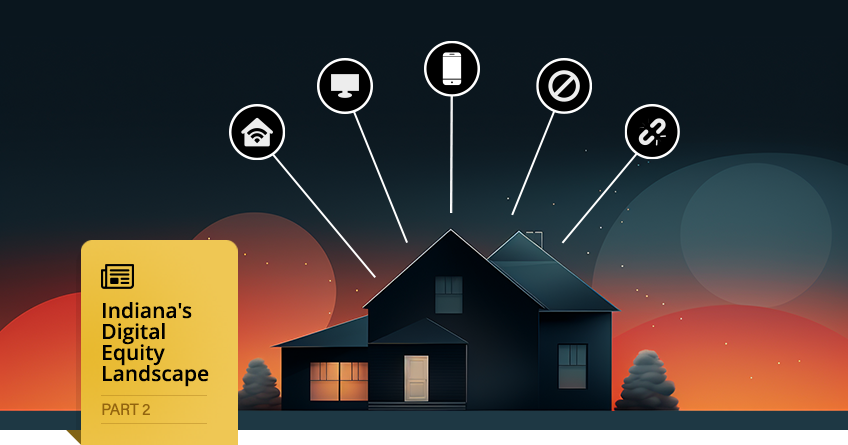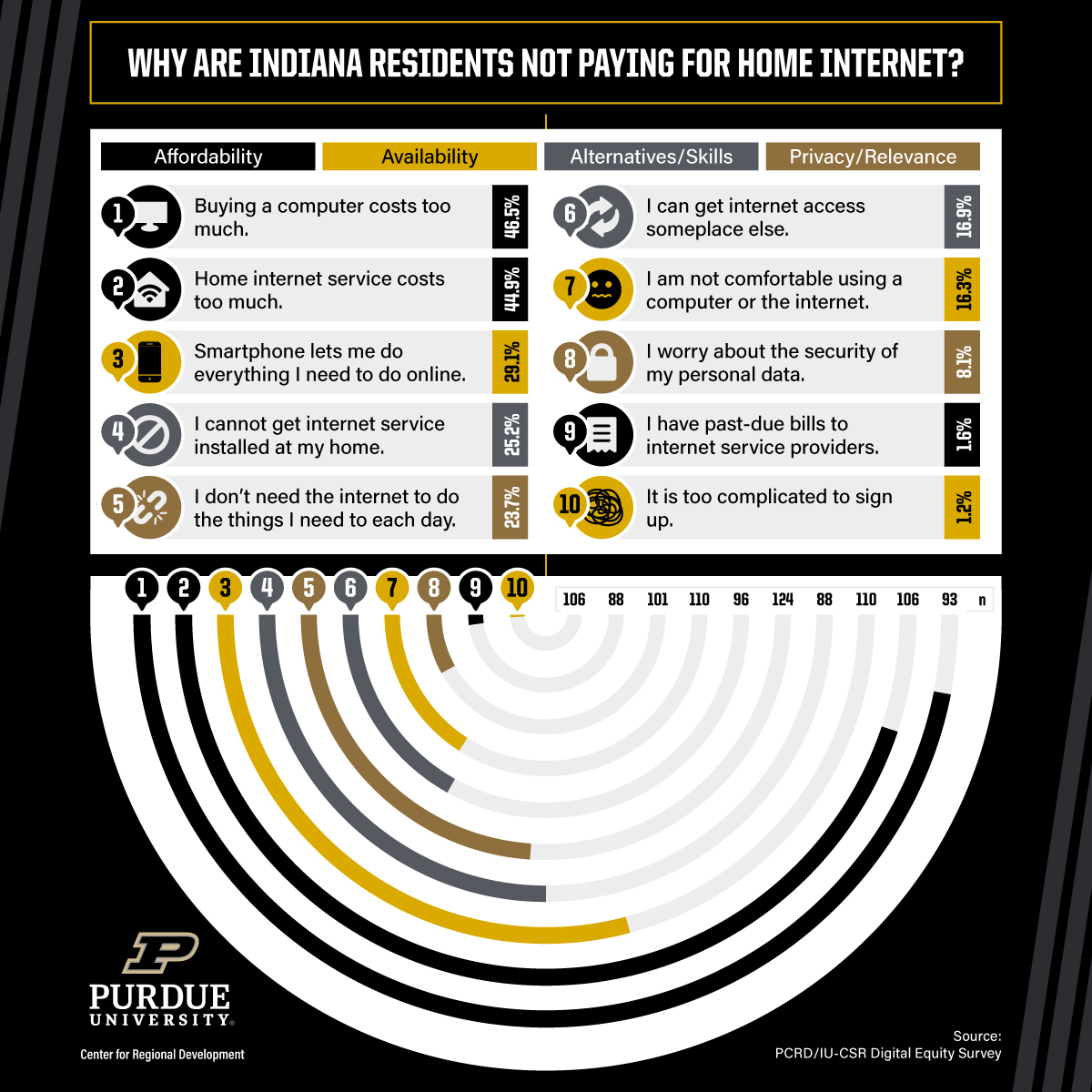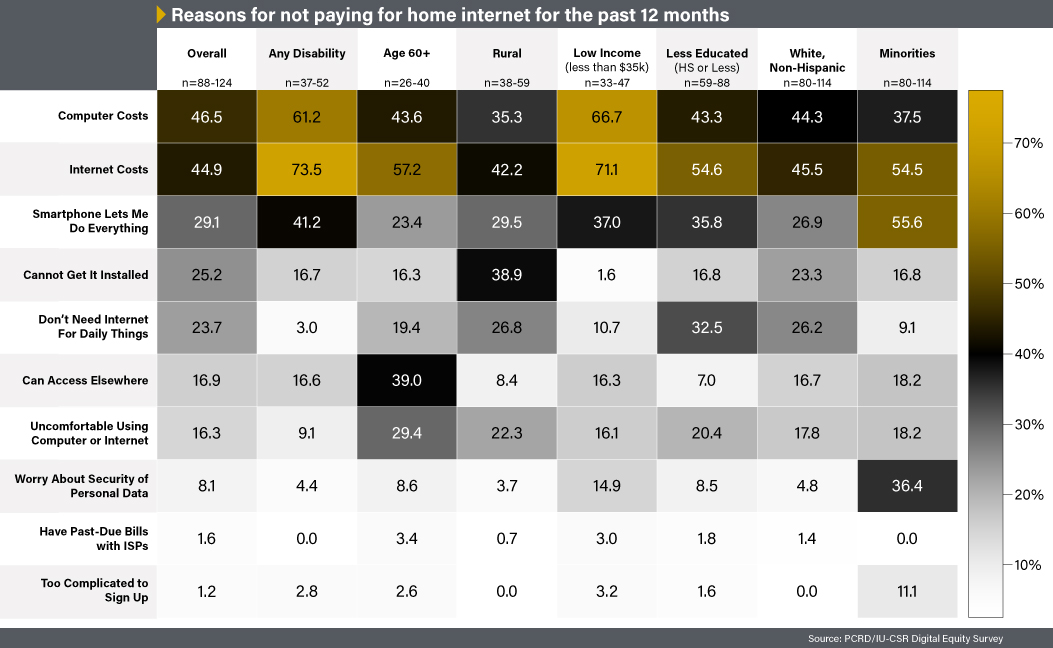Why Are Indiana Residents Not Paying for Home Internet?

In our previous post, we talked about paying for home internet for the previous 12 months. This is a key variable when looking at digital equity for several reasons. First, data limits with home internet subscriptions are higher than cellular data plans. Second, it is more convenient in that you do not need to travel to places to get the internet and you can more easily connect devices with larger screens. Third, it provides privacy when it comes to health-related consultations, hanging out online with family and friends, or running an online home business.
Today, we take a close look at the reasons why 12.4% of Indiana survey respondents did not pay for home internet for any of the previous 12 months. Reasons included in the survey were grouped into affordability, availability, alternatives/skills, and privacy/relevance. Figure 1 breaks down each group and the percentage of survey respondents citing a “big” reason (options included not a reason, small reason, medium reason, and big reason) for not paying for home internet at all over the previous 12 months.
Clearly, the biggest reasons were related to affordability and not only about home internet service but devices too. In fact, lacking a desktop or laptop was the main reason why 7% of survey respondents did not use the internet daily (not shown). Coming in third place is that survey respondents believed a home internet service was not necessary since their smartphone let them do everything they needed to online.
When looking at specific groups (e.g., rural), we see some interesting dynamics. Figure 2 shows that almost three-quarters of survey respondents with any disability cited home internet costing too much as a big reason followed by 61.2% indicating computers cost too much.
Among rural survey respondents, 42.2% said home internet costs too much followed by 38.9% saying they could not get it installed. This confirms lack of broadband access in rural areas is a barrier since less than 10% of urban survey respondents (not shown) cited this reason.
Between white non-Hispanic and racial/ethnic minorities, 55.6% of minorities not paying for home internet cited the use of the smartphone versus 26.9% of white non-Hispanics while 44.3% of white non-Hispanic respondents said computers cost too much compared to 37.5% of racial/ethnic minority respondents.
Figure 2. Percentage of survey respondents citing a “big” reason by specific groups
Barriers to subscribing to home internet are nuanced. A cookie cutter or multiple layers “detached” from the intended target would yield limited results. For example, if trying to address this issue among residents ages 60 or older, home internet subsidies would be more efficient than broadband access/availability. For rural areas, both subsidies and access/availability would move the needle. In other words, digital equity programming needs to be tailored to specific groups and localities.
In our next blog post, we look at reliability of internet access and devices among survey respondents.

Roberto Gallardo is the Vice President for Engagement and an Associate Professor in the Agricultural Economics Department. He holds an electronics engineering undergraduate degree, a... read more






